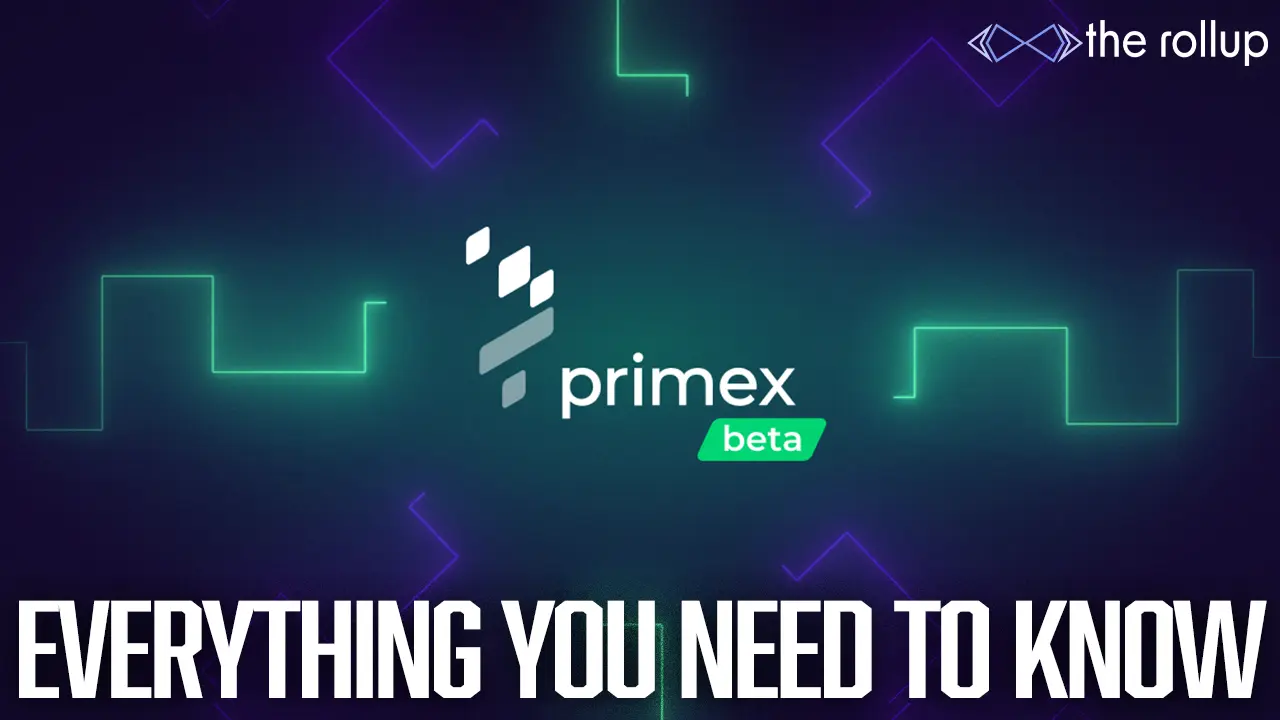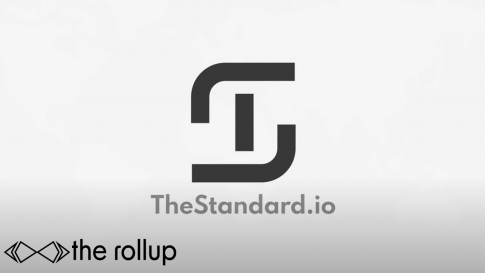A protocol for creating options and stablecoins using ETH
Take one step closer to sovereignty every single week, join the DeFi Slate community below:
DeFi Slate Fam:
Whew! Whatta day today in the markets eh? Fookin’ nuts. Lots of positive PA and hyped investors.
Amidst all the Bitcoin maxi excitement, we are still in the trenches excited about what is going on in the DeFi world on Ethereum.
I mean, lets be real…
This is where all the insane innovation is happening.
Lending. Borrowing. Options. Stablecoins. Yield Farming. Whatever else is going on that we have no idea about.
Introducing: Lien protocol. A ~newer~ anon powered protocol with a intricate design meant to power the decentralized stablecoin space, allowing you to trade call options and bet on price appreciation for Ethereum.
In today’s piece we dive into what Lien is doing & what makes them a hot topic in DeFi.
Lets go lets go lets go!
– Andy

???? Big Ups To Our Great Sponsor Aave: Earn Interest & Leverage Your Assets with Aave, a non-custodial money market protocol leading the #DeFi charge.
ALPHA LEAK: Deposit LINK tokens into Aave to get aLINK, then head over to Yearn to put your aLINK into the yaLINK vault for extra yield. It all starts here with Aave!
Wiretap Wednesday: LIEN Explained
Amidst the recent DeFi craze, there have been several key sectors of innovation that have truly led to what some are now referring to as ‘the future of finance’ as we know it.
Arguably the most important is the creation of decentralized stablecoins denominated in ETH and NOT backed by fiat currencies. Think of sUSD, DAI, and now iDOL with Lien protocol. Unlike other stablecoins backed by USD (think USDT, USDC, TUSD), these decentralized stablecoins are algorithmically pegged to $1 by debt and collateralization ratios.
Click here for a mathematical explanation on how iDOL remains pegged to $1.
These are more in tune with the DeFi ideology of permissionless, borderless, decentalized crypto assets.
Combine that with a team of anonymous developers and you get a cryptopunk’s paradise in Lien Protocol.
Lien solves a few current problems in DeFi with their protocol:
The volatility issue of cryptocurrencies by implementing stablecoin iDOL to use like a fiat currency
The need for human adjustments to keep stablecoins, stable (specifically DAI, which is essentially collateralized debt requiring supply & demand shifts for price stability)
Allowing users to actively mint stablecoins without being overcollateralized in a 1.5:1 similar to MakerDAO
Performing decentralized call options for users bullish on Ethereum
So, what is the Lien Protocol?
The Lien protocol is a protocol for creating options and stablecoins using ETH. The protocol powers the iDOL stablecoin which is “purely backed by ETH derivatives and does not use centralized assets as collateral. Stabilization of the iDOL price is achieved through market mechanisms acting on arbitrage opportunities. The Lien Protocol is governance-free and therefore iDOL tokens are censorship resistant.”
In layman’s terms, this means that the iDOL token is relatively unaffected by price fluctuations in Ethereum because it is backed by a basket of bond tokens.

When you deposit ETH into the Lien smart contract you receive two bond tokens, Solid Bond Token (SBT) and Liquid Bond Token (LBT). They are minted at the same exact time at the corresponding price & expiration time, like traditional options trading.
The LBT is treated in a way that assumes it holds most of the price risk of your ETH, where as the SBT is stable, which goes into backing the iDOL stablecoin. Since the value of each SBT remains stable, and all the price volatility of ETH is on the LBT asset, the USD – iDOL peg remains stable because its backed by the SBT.
Make sense?
The key here is once everything is stable there is no over-collateralization required (like MakerDAO & DAI). This is a huge advantage for users of Lien.
The diagram below shows the process of using Lien Protocol, lets break it down.

First, user John Doe deposits ETH into the Lien protocol, which is then split into equal amounts of LBT & SBT (at the same price & expiration or ‘maturity’ date). The SBT is used to mint iDOL, leaving you with iDOL & LBT. When the expiration date hits, the smart contracts automagically sells the SBT for iDOL paying the SBT holder the amount owed of ETH + any remaining to the LBT holder if price has increased. If the price of ETH is below the price which you entered or ‘strike price’ then you do not receive any of the remaining ETH.
As you can see, using Lien allows you to place call options to go long on Ethereum which are effectively leveraged trades betting on the price of ETH to go up in a given time period.
And finally, we have the FairSwap AMM DEX
“FairSwap is a Uniswap-inspired DEX protocol that utilizes AMMs, or Automated Market Makers. FairSwap is designed to be robust against front-running by combining the innovation of AMMs with the idea of frequent batch auctions.”
FairSwap has a few features which separate it from other AMMs out there:
Front Running Protection Mechanism: FairSwap batches two blocks of tx’s and clears them all simultaneously, preventing any arbitrage bots or front running from those in the Ethereum mempool trying to make quick cash. This is not necessarily a bad thing, rather just a sign of markets being markets, however FariSwap does prevent this from happening using their batching.
Dynamic Fee Pricing: Trading fees on FairSwap are adjusted based off annualized volatility. FairSwap charges 0.2% fee when users mint iDOL, and a minimum of 0.3% fee when users transact on the AMM. The fees are then gathered & distributed to all Lien holders every 30 days. A total of 100% of the protocol fees are distributed to holders, whereas only 20% of FairSwap fees are distributed to holders.
Lien FAQ:
How is iDOL different from other stable coins?
iDOL is an ERC20 token that is programmed to be stable against the US dollar. iDOL is purely backed by ETH derivatives and does not use centralized assets as collateral. Stabilization of the iDOL price is achieved through market mechanisms acting on arbitrage opportunities. The Lien Protocol is governance-free and therefore iDOL tokens are censorship resistant.
I am bullish on ETH. Why would I be interested in LBT?
LBT is essentially a call option on ETH that performs as a 2x leveraged ETH token. If you are bullish on the price of ETH, you can create leveraged long positions by holding LBT. As with call options, you don’t have to worry about margin calls and liquidation during flash crashes.What problem does LIEN solve?
Do I need an account?
You do not need an account to use Lien. You will need an Ethereum wallet. Lien currently supports several wallets such as Metamask.
How can I participate as a Market Maker / Liquidity Provider?
Lien provides several arbitrage and liquidity providing opportunities that sophisticated traders will find interesting.
1. Provide liquidity on FairSwap and earn fees. 80% of fees collected from user transactions on FairSwap are paid to Liquidity Providers. The remaining 20% get distributed to Lien Token holders.
2. Seek arbitrage opportunities on FairSwap. iDOL and LBT can be priced using models such as BSM (Black Scholes Model).
3. Participate in Auctions. SBT, or Solid Bond Token, is an ETH derivative that acts as the collateral for iDOL. Upon maturity, SBT will be redeemable in ETH at a predetermined rate (i.e., the strike price). You can participate in an auction and see if you can pick some SBT at a discount and redeem them for ETH.
Who are the Core Devs?
There is no team, there is no governance, there is no central point of authority.
There is only code. Please verify the code. You can read about our Back Story in an interview article that got published on Defi Prime.
What oracle does the Lien Protocol use?
The Lien Protocol relies on price feeds from external sources in maintaining the stability of the price of iDOL. We carefully deliberated different solutions that were available at the time the Lien Protocol was being developed and ultimately decided on using Chainlink as the oracle. Chainlink is one of the most widely used oracle solutions in the industry, known for its robust and reliable data feeds.
⚠️ DISCLAIMER: Investing into cryptocurrency and DeFi platforms comes with inherent risk including technical risk, human error, platform failure and more. At certain points throughout this post, we might get commission for promoting certain projects, if this is the case we will always make sure it is clear. We are strictly an educational content platform, nothing we offer is financial advice. We are not professionals or licensed advisors.
Liked this post? Share with a friend 🙂
Subscribe to the DeFi Slate Newsletter & join thousands of other crypto enthusiasts:
????Check Us Out On Twitter!
????Join the community on Telegram Channel to get our free V.1. yield farming guide!
????Subscribe to our YouTube channel!
Check out some previous interviews:
DeFi Slate x TheEther: A social governance experience for Ethereum
DeFi Slate x Nick Fett: Oracles, Tellor, and the future of DeFi
Last week in review:
DeFi by Design EP #11: DeFi As An Evolution of Bitcoin w/ Antonio Gomes
Master It Monday: How to avoid scams by cancelling infinite approvals
Recent tweets:





